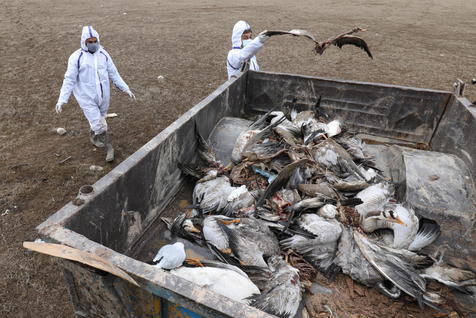There are currently confirmed cases in Arica and Parinacota, Tarapacá, Antofagasta and the Atacama region.
In statements to the El Mercurio TV channel, the Undersecretary of Agriculture José Guajardo said (H5N1) is more aggressive and predicted outbreaks in the south of the country before the end of the summer.
Most affected species are seagulls, terns, pelicans, boobies and jotes, which eat dead animals on the coast.
The first case of influenza was confirmed in northern Chile on December 7.
Colombia, Ecuador, Mexico, Peru and Venezuela also reported H5N1 infections that kill domestic and wild animals, and also cause high morbidity and mortality.
In view of fresh outbreaks in several countries, the regional office of the UN Food and Agriculture Organization decided to activate the disease coordination and response protocols.
FAO is now in contact with official veterinary services and Ministries of Agriculture, Livestock and Environment of affected countries in order to provide them with technical and logistical support to deal with the emergency.
Pll/jcm/car









